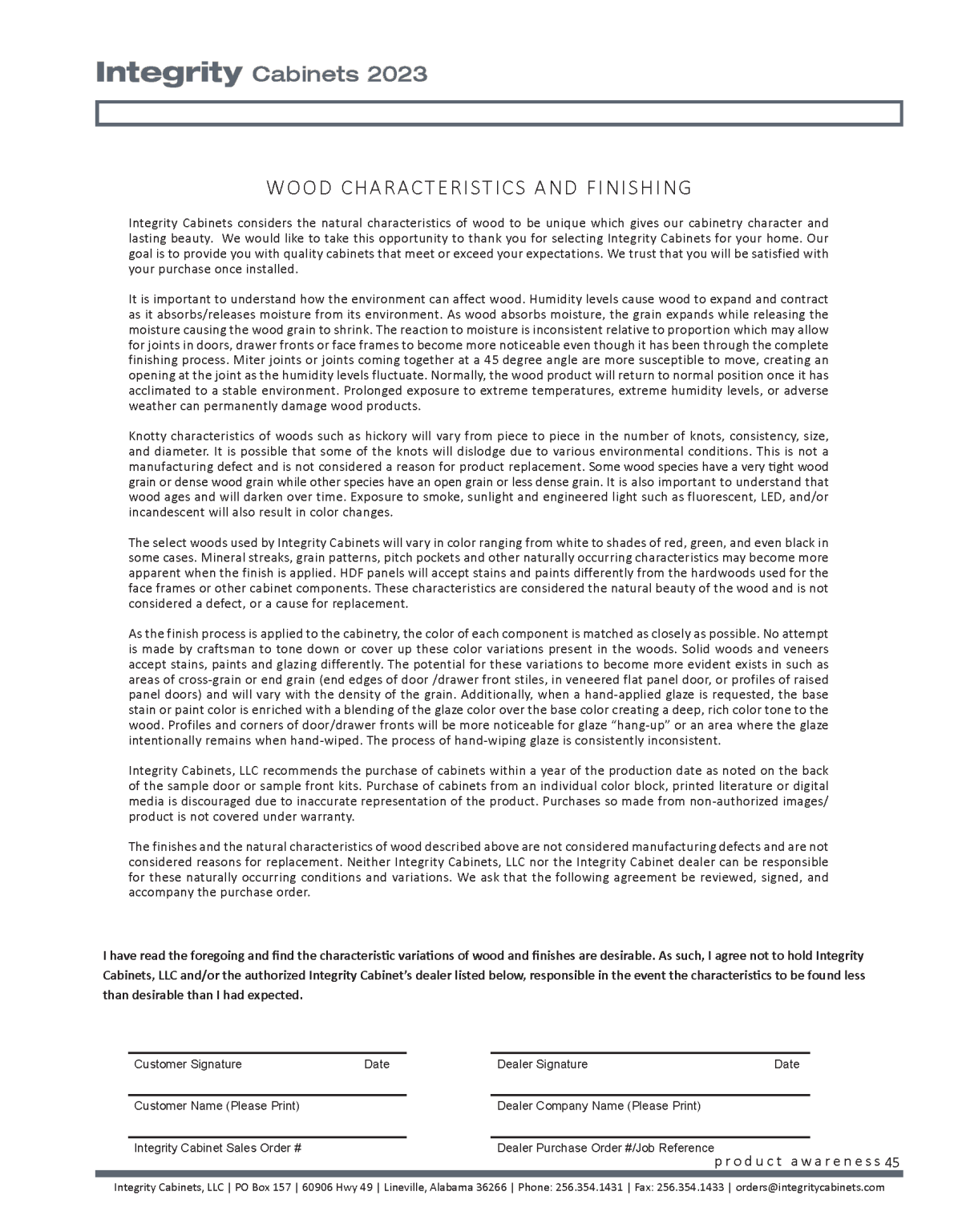Stained finishes on Maple and other hardwoods are experiencing a comeback. So, let’s talk about Maple. Maple is a great option for homeowners who want a versatile, durable hardwood that is perfect for a kitchen with stained — or painted — cabinets.
Things to Know about Maple
Two types of Maple exist: hard maple and soft maple. Both are hardwoods, despite the “soft” label.
Most of the maple wood in the United States is sugar maple, which is also known as hard maple or rock maple. That gives us an idea how hard it is.
Despite being called soft, soft maple is considered a hard wood. Further, “soft” is a relative term and is only used to differentiate it from hard maple.
Most species of soft maple have a hardness and density close to walnut or cherry. And as we know, both of those woods are highly regarded cabinet woods.
Soft and hard Maple have been divided by the cabinet industry into paint grade, which is soft maple, and stain grade, which is hard Maple. A search on Google for hard or soft Maple shows that some lumber companies call them stain grade and paint grade. They don’t even use hard or soft designations. Some cabinet companies don’t even bother mentioning soft maple; they just call it paint grade period.
Hard Maple
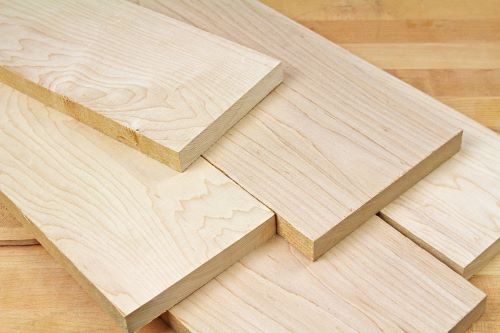
Unlike most other hardwoods, the sapwood – or wood layers closest to the bark – is used rather than its heartwood. Maple’s sapwood color ranges from nearly white, to an off-white cream color, sometimes with a reddish or golden hue. The heartwood varies in color from tan to dark reddish brown.
The photo shows the white sapwood and dark heartwood of hard maple.
Maple has a fine uniform texture and is generally straight-grained. However, it may also include small amounts of birdseye or curly figure. More on that later.
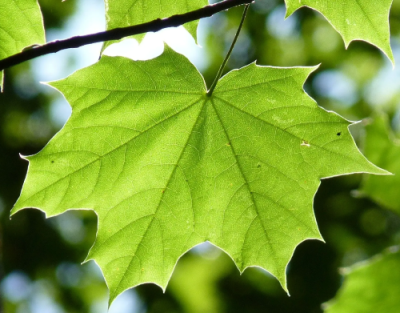
Soft Maple
In the cabinet business, soft Maple is used for painted finishes because it doesn’t telegraph grain through the paint. Soft maple sands easily and doesn’t “fuzz up” during sanding, which results in a very smooth finish.
Further, because soft Maple is relatively inexpensive, it is used to build drawer boxes, floors and shelves, places in the cabinet where prominent natural wood characteristics aren’t seen.
Soft Maple is generally straight grained with light blond sapwood, sometimes with a grey tint. In addition, it exhibits occasional dark brown flecks and heartwood that varies from light to dark reddish brown.
You can expect to see small knots, splits or cracks, narrow staves, sapwood, heartwood, pin knots and mineral streaks in soft maple.
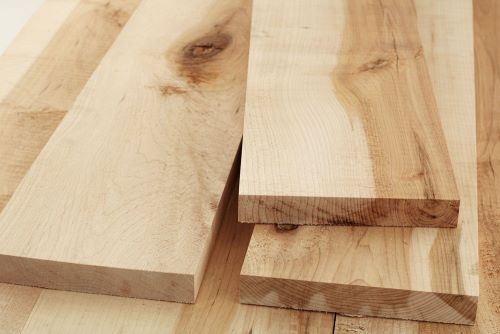
Maple’s Strength/Durability
When it comes to strength and durability, maple is one of the best kitchen cabinet materials anyone can have. After all, it is not called a hardwood for nothing. It holds up well and resists significant dents or dings. Because of its density, hard maple wood is often used for bowling alley floors and to make baseball bats, pool cues, tool handles, butcher blocks and cutting boards.
Maple is also good at resisting changes in temperatures and will not crack or warp like many other types of wood. Thanks to its strength and durability, we can expect maple cabinets to last about 30 years if properly maintained.
Finishing
Finishing maple can be tricky because the wood is tight grained, dense and very porous. Stain color can be absorbed unevenly if the surface isn’t prepared properly with sealer, resulting in a blotchy appearance.
Further, because of density variations throughout the wood, there are some areas with a more open grain. Staining can end up spotty or uneven because the stain absorbs easily into areas with the open grain, while the tighter-grained areas do not absorb as much.
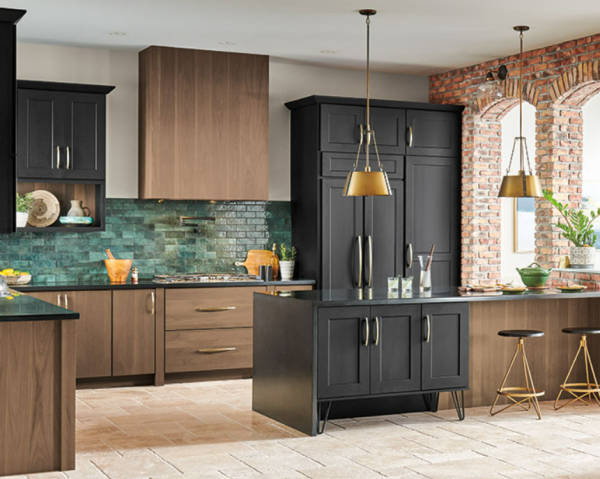
Maple can be especially unpredictable when a dark stain is applied. It’s preferable to allow the natural beauty of maple to be highlighted by using a clear or light stain that allows the wood’s inherent characteristics to shine through.
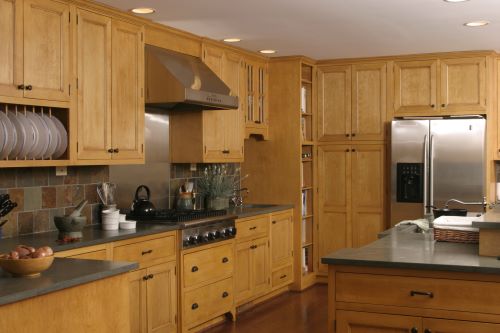
Even with good product selection and proper preparation, expectations of an acceptable finished look vary widely. It’s up to you to explain to your clients what they can expect to see from stained maple cabinets. There’s a very good reason cabinet manufacturers provide disclaimer forms for your customers to read and sign before ordering maple cabinets with stained finish.
Affordability
Maple cabinets are one of the more affordable quality hardwoods you can recommend. It’s also eco-friendly and sustainably raised.
Varieties of Maple trees are native to North America, and they can be found in forests throughout the Eastern United States. And because maple is abundant and readily available, it is an affordable option for your budget-conscious clients.
Color/Appearance
Before finishing, maple is primarily white in color. While maple is very uniform, you will notice random rays of wood grain outlined with small, darker lines.
Small black dots, known as bird’s eyes, and black mineral traces are another touch of nature in solid maple doors and front frames. These characteristics are common and to be expected as a natural part of the wood.
Maple will also begin to take on a golden hue as it ages.
Birdseye Maple
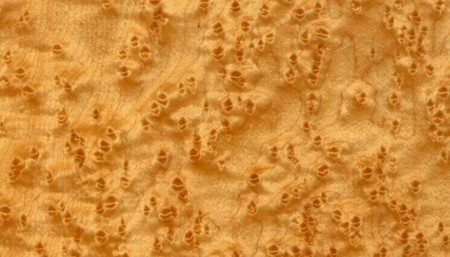
Birdseye maple got its name because the tiny knots in the grain resemble small bird’s eyes. The figure is reportedly caused by unfavorable growing conditions for the tree. The tree attempts to start numerous new buds to get more sunlight, but because of poor growing conditions, the new shoots are aborted, and afterward a number of tiny knots remain.
Birdseye maple is frequently sold as veneers. It makes a lovely center panel for doors.
Curly Maple
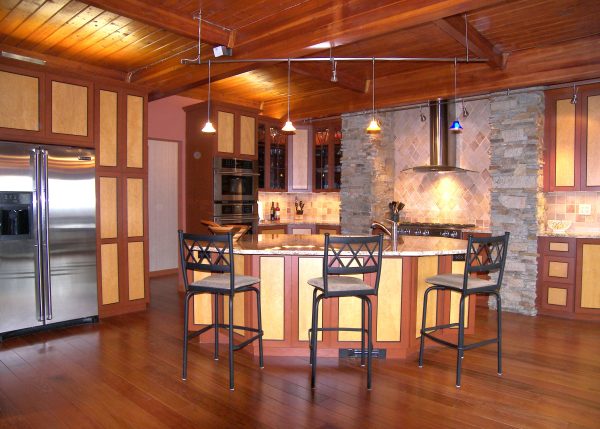
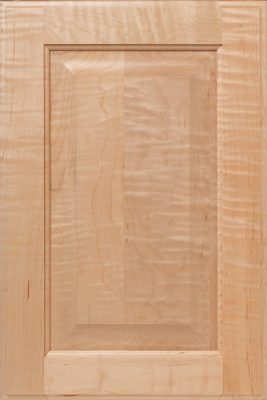
Curly maple is not a separate wood species. It is the description of a figure in the grain of Maple wood. Also known as tiger maple, flame, or fiddleback maple, curly maple is characterized as undulating bands running perpendicular to the grain of the wood.
No one really knows what causes the beautiful figure in curly maple. Some believe that minerals concentrated in an area of the tree’s soil affect the grain, while others believe the pattern may be caused by a viral infection. Whatever the cause, the result is alternating bands of softer and harder wood.
Curly maple looks its best when used in contemporary styled kitchen cabinets.
Conclusion
Maple is a hard wood—a very hard wood—making it a durable choice for a kitchen.
The only negative associated with maple for kitchen cabinets is its unpredictable nature when it comes to stained finishes. In the hands of the right cabinet company, any heartwood streaks or porous sapwood can be treated before staining, and the results will be stunning.
This hardwood easily stands the test of time and your clients can refresh their kitchen’s look throughout the years with simple changes to decor or accessories, such as cabinet hardware. Maple cabinets should last for decades.

